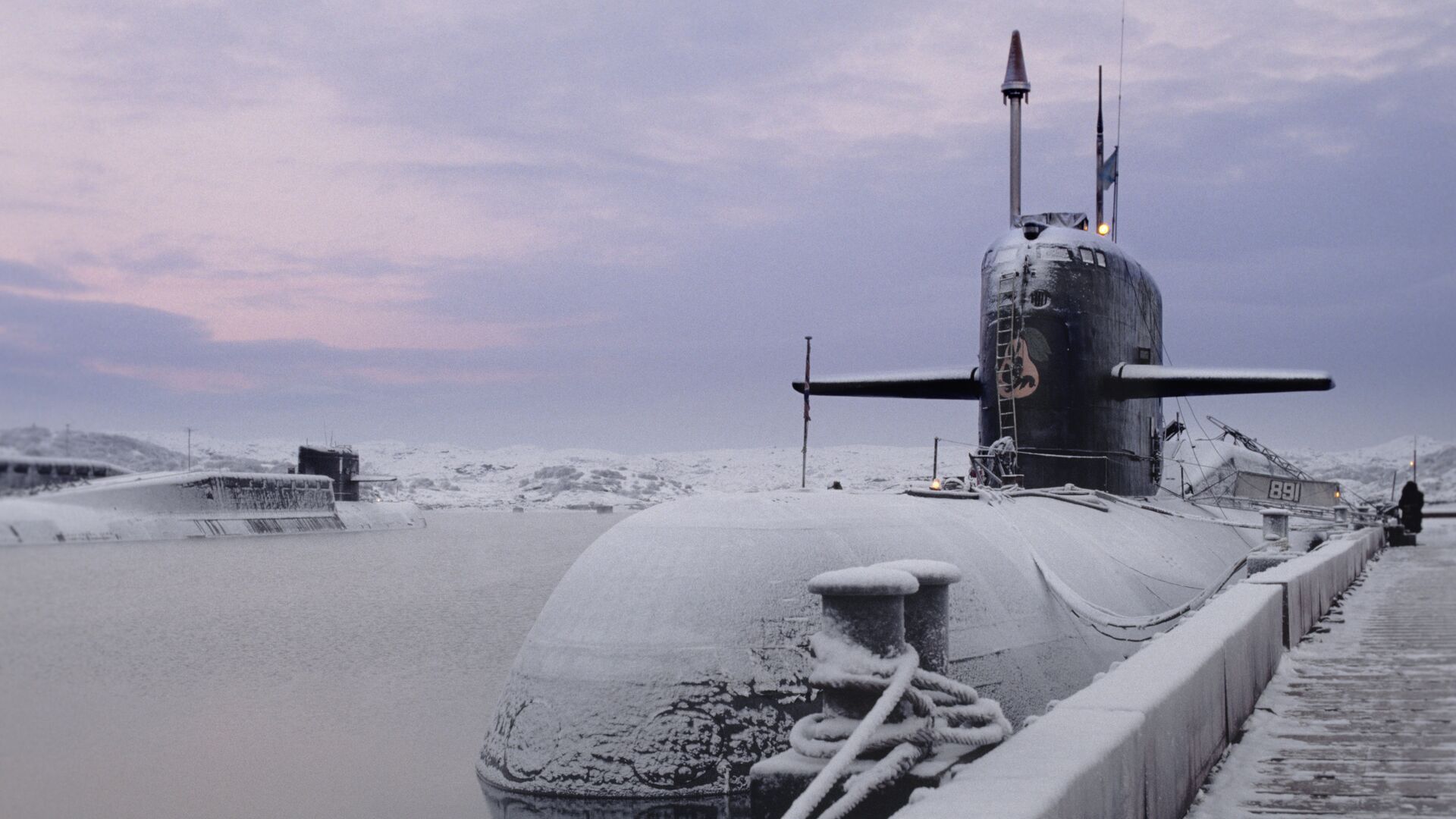https://sputnikglobe.com/20211122/russian-admiral-says-kursk-sank-following-collision-with-nato-sub-1090915053.html
Russian Admiral Says Kursk Sank Following Collision With NATO Sub
Russian Admiral Says Kursk Sank Following Collision With NATO Sub
Sputnik International
The Kursk, a Russian nuclear submarine, sank on 12 August 2000, during a Northern Fleet drill at a depth of 108 meters, killing all 118 crew members. According... 22.11.2021, Sputnik International
2021-11-22T06:38+0000
2021-11-22T06:38+0000
2021-11-22T06:42+0000
kursk submarine
newsfeed
military & intelligence
europe
nuclear submarines
https://cdn1.img.sputnikglobe.com/img/105438/97/1054389791_0:85:3105:1832_1920x0_80_0_0_1b44ebb1c4e94c8eb6b97c2b6f11f35d.jpg
According to a Russian Admiral, the sinking of the Kursk was the result of a collision with a NATO submarine. The ship's demise in 2000 remains one of the most tragic losses in the history of the Russian Navy.The foreign submarine that had “collided” with the Kursk was subsequently spotted the off the coast of Norway by an anti-submarine Russian Navy plane, Admiral Vyacheslav Popov, former commander of the Northern Fleet (1999-2001), told Sputnik.Furthermore, the admiral claimed that he knows the name of the submarine in question “with 90 percent certainty”. However, he emphasised that he cannot publish the evidence to back up his claims.According to Popov, the NATO submarine was tracking the Kursk, but came too close to it, “or the Kursk's manoeuvre led to the loss of contact”. He emphasised that the foreign submarine was damaged as a result of a collision with the Kursk and the subsequent explosion.The admiral also recalled that the exercises of the Northern Fleet in August 2000 took place in both Russian and neutral waters. According to Popov, three foreign submarines were gathering reconnaissance during the drills.Russian and foreign media reports identified the USS Memphis and USS Toledo nuclear submarines, as well as the HMS Splendid as being in the exercise area. The Russian Defence Ministry requested the Pentagon to inspect the Memphis and the Toledo, but was denied its request, given “all the submarines are in working order”. A similar answer was received from London, according to Russian media.The Kursk sank on 12 August 2000, during a Northern Fleet drill in the Barents Sea 175 kilometres from the Severomorsk navy base at a depth of 108 meters, killing all 118 crew members. The official story blamed a torpedo explosion on board and the subsequent detonation of ammunition.
Sputnik International
feedback@sputniknews.com
+74956456601
MIA „Rossiya Segodnya“
2021
News
en_EN
Sputnik International
feedback@sputniknews.com
+74956456601
MIA „Rossiya Segodnya“
Sputnik International
feedback@sputniknews.com
+74956456601
MIA „Rossiya Segodnya“
kursk submarine, newsfeed, military & intelligence, europe, nuclear submarines
kursk submarine, newsfeed, military & intelligence, europe, nuclear submarines
Russian Admiral Says Kursk Sank Following Collision With NATO Sub
06:38 GMT 22.11.2021 (Updated: 06:42 GMT 22.11.2021) The Kursk, a Russian nuclear submarine, sank on 12 August 2000, during a Northern Fleet drill at a depth of 108 meters, killing all 118 crew members. According to the official story, the tragedy was caused by a torpedo explosion on board.
According to a Russian Admiral, the sinking of the Kursk was the result of a collision with a NATO submarine. The ship's demise in 2000 remains one of the most tragic losses in the history of the Russian Navy.
The foreign submarine that had “collided” with the Kursk was subsequently spotted the off the coast of Norway by an anti-submarine Russian Navy plane, Admiral Vyacheslav Popov, former commander of the Northern Fleet (1999-2001), told Sputnik.
Furthermore, the admiral claimed that he knows the name of the submarine in question “with 90 percent certainty”. However, he emphasised that he cannot publish the evidence to back up his claims.
According to Popov, the NATO submarine was tracking the Kursk, but came too close to it, “or the Kursk's manoeuvre led to the loss of contact”. He emphasised that the foreign submarine was damaged as a result of a collision with the Kursk and the subsequent explosion.
“It [the foreign submarine] was on the ground for some time, regaining its ability to move. And having restored it, it went to its base, which was also recorded by our anti-submarine aircraft off the coast of Norway,” Popov said.
The admiral also recalled that the exercises of the Northern Fleet in August 2000 took place in both Russian and neutral waters. According to Popov, three foreign submarines were gathering reconnaissance during the drills.
Russian and foreign media reports identified the USS Memphis and USS Toledo nuclear submarines, as well as the HMS Splendid as being in the exercise area. The Russian Defence Ministry requested the Pentagon to inspect the Memphis and the Toledo, but was denied its request, given “all the submarines are in working order”. A similar answer was received from London, according to Russian media.
The Kursk sank on 12 August 2000, during a Northern Fleet drill in the Barents Sea 175 kilometres from the Severomorsk navy base at a depth of 108 meters, killing all 118 crew members. The official story blamed a torpedo explosion on board and the subsequent detonation of ammunition.

